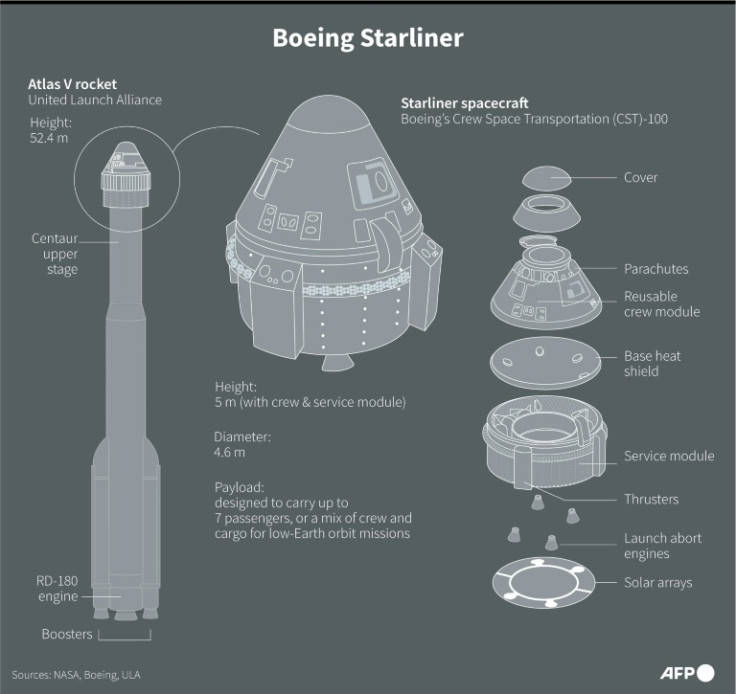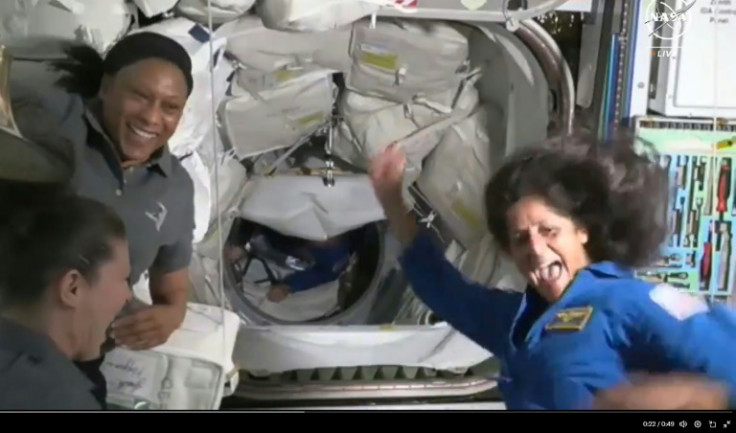Boeing Starliner Return To Earth Set For June 26

NASA and Boeing are targeting a June 26 return to Earth of the Boeing Starliner from the International Space Station, officials said Tuesday.
Starliner's first crewed mission to the ISS, which had been scheduled to last about eight days, has been extended due to thruster malfunctions and helium leaks.
The spaceship blasted off from Florida atop a United Launch Alliance Altas V rocket on June 5 following years of delays and safety scares -- as well as two aborted launch attempts that came as astronauts were strapped in and ready to go.
NASA and Boeing officials said at a press conference that they were looking at a return date of no earlier than June 26 for the two astronauts, Butch Wilmore and Suni Williams, both ex-US Navy test pilots.
Wilmore and Williams are the first crew to fly Starliner, which Boeing and NASA are hoping to certify for regular rides to the ISS -- a role SpaceX has been fulfilling for the past four years.
"We want to give our teams a little bit more time to look at the data, do some analysis and make sure we're really ready to come home," said Steve Stich, manager of NASA's Commercial Crew Program.
Mark Nappi, program manager of Boeing's Commercial Crew Program, said there is "good thruster performance now."
"It's more nominal and the (helium) leaks show that they're stable and less than they've been previously," Nappi said. "That leads us to believe that we have a good safe spacecraft."
The undocking of the Starliner capsule "Calypso" from the ISS would take place at 10:10 pm Eastern Time on June 25 (0210 GMT on June 26), Stich said.
Landing at White Sands Space Harbor in the southwestern United States would occur on June 26 at around 4:51 am Eastern Time (0851 GMT).
After undocking, Starliner will reenter the atmosphere, with the crew experiencing 3.5G as they slow down from 17,500 miles (28,000 kilometers) per hour to a gentle parachute- and airbag-assisted touchdown.
The initial ISS docking was delayed by more than an hour after some of Starliner's thrusters that provide fine maneuvering initially failed to kick in.
Prior to launch, it was known there was one helium leak affecting Starliner. While non-combustible, helium provides pressure to the propulsion system.
During the flight, however, other leaks emerged.
Teething issues with new spaceships aren't uncommon. The Space Shuttle program in its early days faced its share of problems, as did SpaceX's Dragon program in the early 2010s, when that vessel was a cargo-only spaceship.
Starliner is just the sixth type of US-built spaceship to fly NASA astronauts, following the Mercury, Gemini and Apollo programs in the 1960s and 1970s, the Space Shuttle from 1981 to 2011, and SpaceX's Crew Dragon from 2020.
The United States was left reliant on Russian Soyuz rockets to go to the ISS between 2011 and 2020.
Boeing's program faced setbacks ranging from a software bug that put the spaceship on a bad trajectory on its first uncrewed test, to the discovery that the cabin was filled with flammable electrical tape after the second.
A successful Starliner mission would help dispel the bitter taste left by the years of safety scares and delays, and provide Boeing a much-needed reprieve from the safety concerns surrounding its passenger jets.


© Copyright AFP 2024. All rights reserved.





















